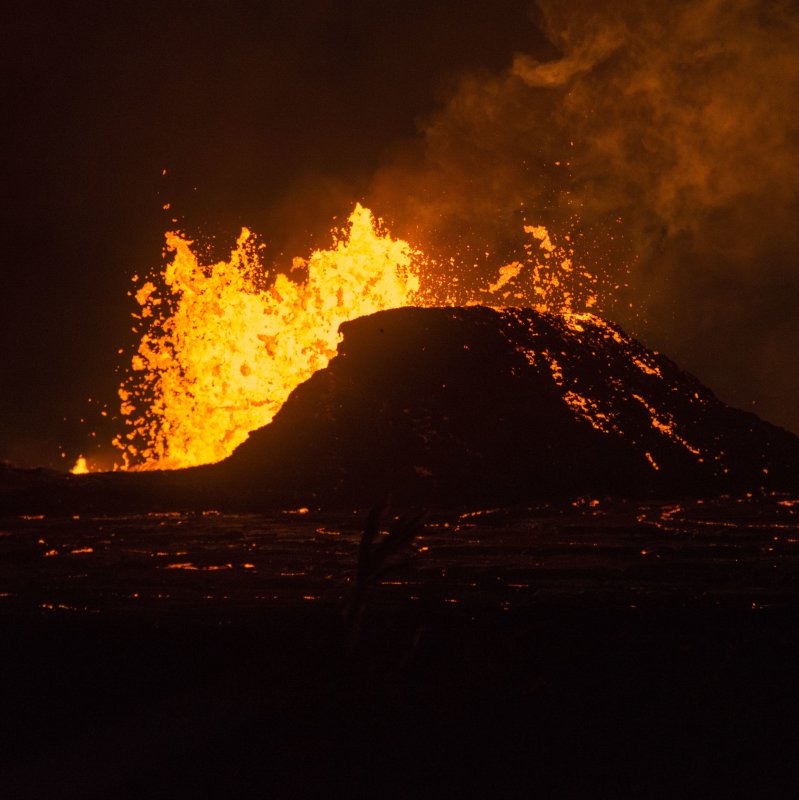1 of 5 | Lava erupts from a fissure in Pahoa, Hawaii, on May 23. Lava from Fissure 8, caused by the eruption of Hawaii's Mount Kilauea, moved toward the Pacific Ocean Sunday after a 5.5-magnitude earthquake -- prompting more evacuations. Photo by Grace Simoneau/FEMA/EPA-EFE
June 4 (UPI) -- A strong earthquake beneath the erupting Mount Kilauea volcano shook Hawaii's Big Island and sent up an 8,000-foot ash plume, scientists said.
While dozens of quakes in the magnitude-2 and -3 range have occurred since the volcano began spewing ash and lava a month ago, Sunday's 5.5-magnitude earthquake is the largest since. The U.S. Geological Survey said Sunday's tremor occurred at a depth of 1.1 miles.
There were no reports of injuries or additional damage.
The new ash plume blew to the southwest, toward the island's Volcano and Pahala areas, and residents were warned to limit exposure to airborne ash, gas and volcanic particles. Gas emissions from the volcano remain at high levels and the Pacific Tsunami Warning Center said Sunday there was no threat of a possible tsunami.
One of more than a dozen fissures in the earth's crust caused by the earthquake, Fissure 8, continues to feed a half-mile-wide lava flow toward the ocean at a rate of 250 feet per hour, the USGS said Sunday.
While local first responders searched for people trapped in their homes in isolated areas, Hawaii County Civil Defense reported that fewer than a dozen refused evacuation in an area electrical power, water and telephone service are inoperable.
Officials said all identified fissures continue to emit hazardous gases. More than 400 power poles and other equipment have been destroyed by the encroaching lava, Hawaii Electric Light Co. said. All beach parks in the area, including Hawaii Volcanoes National Park, are closed.
Lava flows have closed roads, buried nearly 90 structures and stoked fears that "laze" -- or explosion-related acids -- will occur when lava moving toward the Pacific Ocean meets cold seawater. "Laze" is airborne and can be directed by the wind.
Although the eruptions began in early May, Mount Kilauea has been seismically active for more than 35 years. The volcano awakened from dormancy in January 1983 and destroyed the town of Kalapana seven years later.















